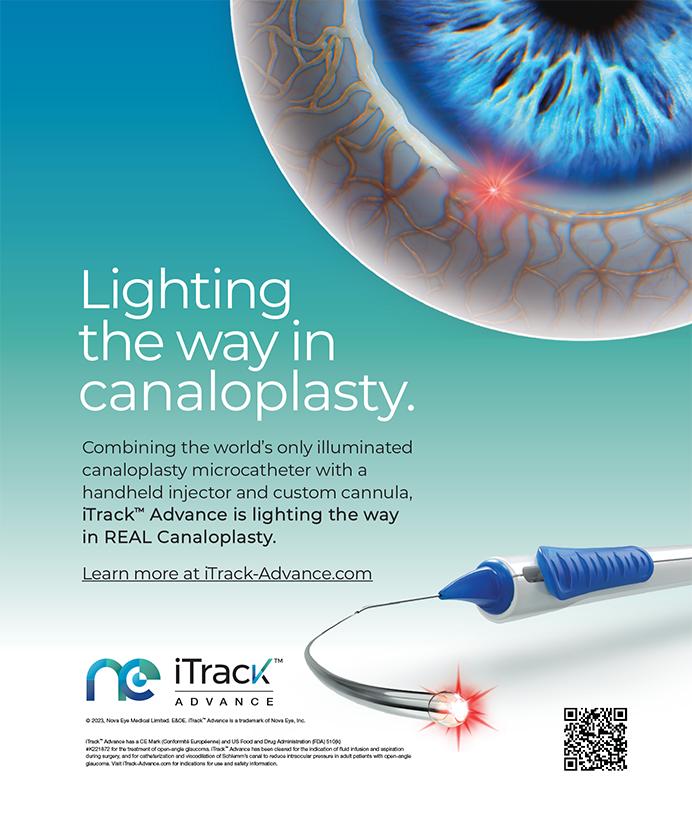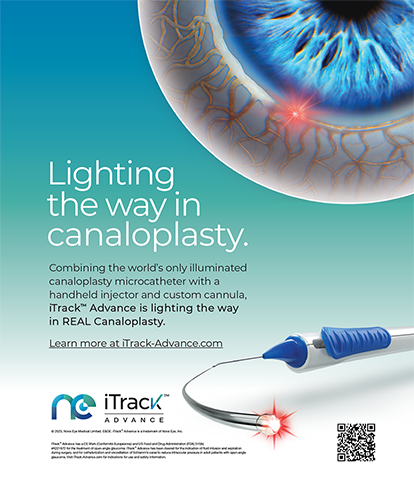Like most cataract surgeons, I had occasionally encountered patients with a floppy iris intraoperatively and would note the occurrence in their chart so that I could take precautionary measures with their second eye. The landmark article by Chang and Campbell1 sensitized me to the interrelation between intraoperative floppy iris syndrome (IFIS) and a patient's use of tamsulosin.
As I sought an effective strategy for managing eyes with IFIS, I found that pupillary dilation with phenylephrine, tropicamide, cyclopentolate, and atropine did not prevent miosis. Nor did pupillary stretching, and I normally shy away from this technique, because it increases my incidence of cystoid macular edema (CME). Other surgeons had advocated viscomydriasis with Healon 5 (Advanced Medical Optics, Inc., Santa Ana, CA) and low-flow phaco parameters (see the articles by Robert Osher, MD, and colleagues on page 53 and by Douglas Koch, MD, on page 65). Like many cataract surgeons in the US, however, I favor a high-flow phaco technique.
During my training, I was taught to change only one parameter–or as few as possible–when learning a new technique. I therefore set out to determine which ophthalmic viscosurgical device (OVD) was most effective and safe in eyes with IFIS undergoing phaco surgery with high vacuum and aspiration flow parameters. To that end, I compared the supercohesive viscoadaptive Healon 5 to the more viscous, dispersive Discovisc (Alcon Laboratories, Inc., Fort Worth, TX). According to my preliminary results, the latter is a better choice.
MATERIALS AND METHODS
My ongoing study prospectively enrolls patients with bilateral cataracts who are using tamsulosin. One eye is randomized to Healon 5, and the other receives Discovisc. All eyes undergo pupillary dilation with 2.5 phenylephrine, 1 tropicamide, and 1 cyclopentolate drops, but no mechanical measures are used.
I administer topical anesthesia but will use a block in nervous patients who squeeze their eyelids in order to decrease billowing of the iris during surgery. I create a near-clear biplanar incision. I perform surgery using the Infiniti Vision System (Alcon Laboratories, Inc.) with an aspiration flow rate of 50mL and vacuum of 500mmHg for quadrant removal. During this step, I have found it helpful to put both aspiration and vacuum on linear control. Doing so allows me more control in occluding the phaco tip and moving the nuclear fragment into the pupillary plane for safe emulsification. Finally, using Discovisc to effect a "phacoviscofracture" and elevate an errant nuclear fragment helps tremendously.
For the purposes of the study, I make subjective notes on each pupil's intraoperative behavior and record any complications. Postoperatively, I measure each eye's visual acuity, pachymetry, and endothelial cell count.
RESULTS
To date, I have data on 10 eyes of five patients, with an even distribution to the two OVDs (five eyes with Healon 5 and five with Discovisc). The patients ranged in age from 71 to 84 years, and all of them were taking tamsulosin.
Intraoperatively, the iris prolapsed in eight of 10 eyes. Nine eyes exhibited miosis that required viscomydriasis. In those cases, both OVDs performed well. I typically needed two syringes of Healon 5, however, because it exited the eye as soon as phacoemulsification began, which led to a recurrence of miosis. Posterior capsular tears occurred in two eyes, both of which were in the Healon 5 group. One eye, also in the Healon 5 group, experienced iris chafing and burn as well as CME.
Ninety days after surgery, one eye from the Healon 5 group had persistent microcystic corneal edema and 20/60- vision. Another eye from the Healon 5 group had CME and a visual acuity of 20/40. The remaining eight eyes saw 20/20. One of 10 eyes exhibited a severely chafed iris and persistent CME after phacoemulsification. As mentioned earlier, this eye was in the Healon 5 group.
There was no appreciable difference in pachymetry except in the eye with persistent corneal edema. The mean endothelial cell loss was 16.6 in the Healon 5 eyes versus 7.5 in the Discovisc eyes.
CONCLUSION
The sample size of my study is small, and further research is necessary. Based on my preliminary results, Discovisc provides longer-lasting viscomydriasis and superior protection for endothelial cells, because it remains in the eye when high-flow phacoemulsification begins. Moreover, when the surgeon uses high aspiration and flow parameters, Discovisc's greater retentiveness means a lower chance of the iris' incarceration in the phaco tip, a decreased incidence of posterior capsular tears, and, hypothetically, less CME. Finally, with my phaco parameters and technique, I usually needed more Healon 5 (two syringes) than Discovisc (one syringe).
No single technique is going to work for every eye with IFIS, however, so surgeons must be familiar with multiple strategies for the management of these challenging cases.
CONCLUSION
By mechanically widening the pupil and by reducing the tendency for the iris to prolapse and billow, Healon 5 appears to be an ideal OVD for managing IFIS in the patient with a history of using Flomax. Although the added difficulty of operating on patients with IFIS cannot be underestimated, we have achieved excellent surgical outcomes by performing meticulous slow-motion phacoemulsification and using Healon 5.
Satish Modi, MD, FRCSC, is Assistant Clinical Professor of Ophthalmology at the Albert Einstein College of Medicine in Bronx, New York, and is in private practice in Poughkeepsie and Fishkill, New York. He is on the speaker's bureau for Alcon Laboratories, Inc. Dr. Modi may be reached at (845) 454-1025; smodieyes@aol.com.


